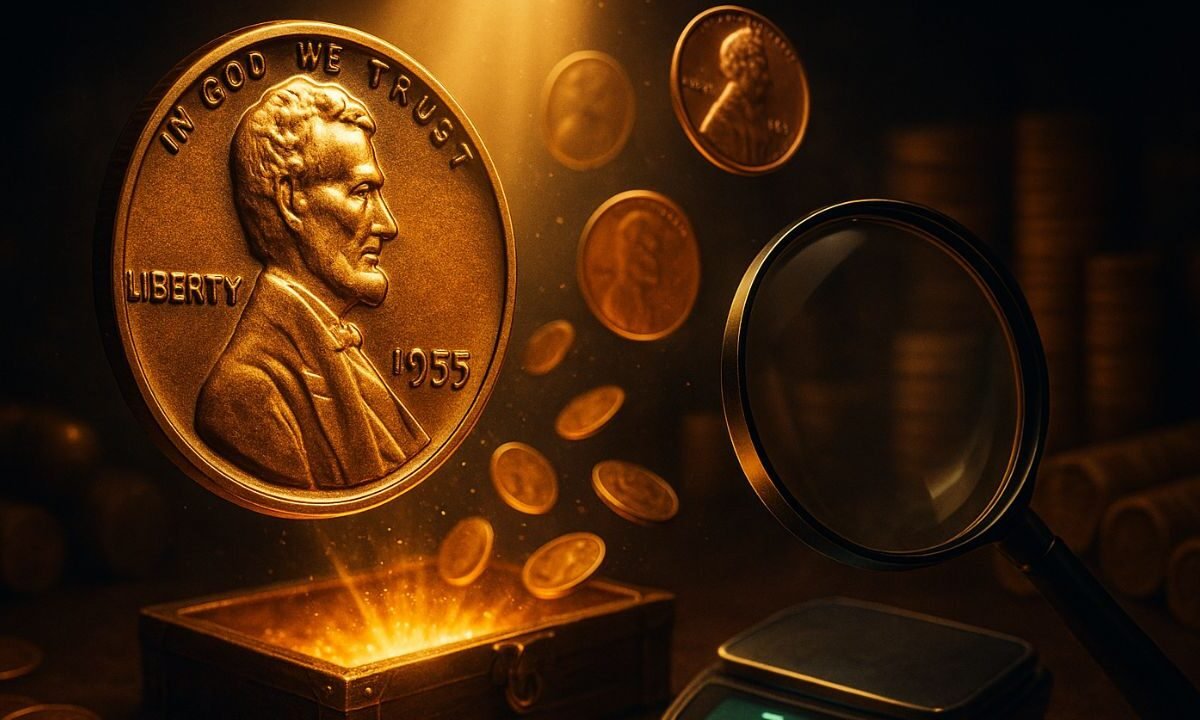Everyday pocket change could hide a life-changing treasure. Certain U.S. pennies with minting errors or unusual varieties are among the most sought-after coins in the world, often selling for tens of thousands of dollars—or even more than a million.
This guide explains the most valuable error pennies, how to identify them, and what they’ve sold for in real auctions.
The Rarest and Most Valuable Error Pennies
1. 1958 Doubled Die Obverse (DDO)
- Only three examples are confirmed to exist.
- Strong doubling appears on LIBERTY, IN GOD WE TRUST, and the date.
- One of the most recent auction sales topped $1.1 million.
2. 1943 Bronze (Copper) Cent
- During World War II, pennies were struck in steel to save copper.
- A handful were mistakenly struck in bronze planchets.
- Authentic examples can bring $100,000 to over $1 million, depending on condition.
3. 1944 Steel Cent
- After the war, the Mint switched back to copper, but some steel planchets were used by mistake.
- Sales for high-grade pieces have reached $180,000–$400,000.
4. 1969-S Doubled Die Obverse
- Known for its dramatic doubling on the lettering.
- Early finds were once mistaken for counterfeits.
- High-grade examples sell between $70,000 and $120,000+.
5. 1992 “Close AM”
- On the reverse, the A and M in AMERICA nearly touch.
- Auction records show values from $5,000 to $25,000.
6. 1999 “Wide AM”
- The A and M are widely spaced apart, rare for circulation strikes.
- Depending on condition, these bring $1,000–$4,000.
7. 1982-D Small Date Copper
- In 1982, pennies transitioned from copper (3.11 g) to zinc (2.5 g).
- Only two genuine examples of the 1982-D Small Date Copper are known.
- They’ve sold for $10,000–$18,000.
8. 1922 “No D” (Strong Reverse)
- Only Denver struck pennies in 1922, but some were minted without the “D” mintmark.
- With a sharp reverse, these coins sell for tens of thousands in higher grades.
Quick Reference
| Error Variety | Identification | Value Range |
|---|---|---|
| 1958 Doubled Die | Strong doubling on date & legends | $1,000,000+ |
| 1943 Bronze Cent | Copper color, ~3.11 g weight | $100,000 – $1,000,000+ |
| 1944 Steel Cent | Magnetic, silvery steel color | $180,000 – $400,000 |
| 1969-S Doubled Die | Bold doubled lettering | $70,000 – $120,000 |
| 1992 Close AM | A and M nearly touching | $5,000 – $25,000 |
| 1999 Wide AM | A and M widely spaced | $1,000 – $4,000 |
| 1982-D Copper Small Date | Weighs 3.11 g (copper) | $10,000 – $18,000 |
| 1922 No D | No mintmark, strong reverse | $20,000 – $30,000+ |
How to Check Your Pennies at Home
- Use a magnifier: Look closely at lettering and dates for clear doubling.
- Weigh the coin: Copper pennies weigh about 3.11 g, while zinc ones weigh about 2.5 g.
- Try a magnet: A genuine steel cent will be magnetic.
- Look at AM spacing: In Close AM or Wide AM varieties, focus on the spacing of AMERICA on the reverse.
- Certification: If your coin matches a rare variety, have it authenticated by PCGS or NGC before selling.
That small, ordinary-looking penny in your pocket could be worth thousands—or even hundreds of thousands—of dollars. The most valuable errors come from rare minting mistakes like doubled dies, wrong planchets, or design-spacing varieties.
By using a magnifier, scale, and magnet, you can quickly check your own coins. If you find a match, it’s worth sending it to a grading service. Who knows—your spare change could turn into a six-figure treasure.
FAQs
How do I know if my doubled die penny is real?
Look for strong, thick doubling in the letters and date. Flat or shadowy doubling is usually machine doubling, which has little value.
What is the difference between Close AM and Wide AM?
On the Close AM, the letters A and M in AMERICA are almost touching. On the Wide AM, they are clearly separated.
Can I sell my penny without certification?
You can, but certification increases buyer trust and usually results in a much higher sale price.

